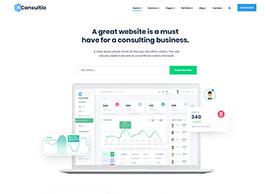Published in Mailing Systems Technology – March/April 2019 Issue.
 There are numerous benefits in utilizing a presort provider, and now, with the rate changes that took place in January 2019, the perks are even greater.
There are numerous benefits in utilizing a presort provider, and now, with the rate changes that took place in January 2019, the perks are even greater.
The start of the year is always a good time to evaluate your current suppliers, to make sure you have the best agreements, terms and services at the lowest prices. One area that often goes unchecked is your mailing Presort services. This is especially important since on January 27, 2019 the letter savings increased by $.025 per piece, making these services significantly more valuable! This article will explore the main items that you need to consider including rates, service standards, additional mail classes, contracting as well as tips on negotiating for the future. As I always need to state, I have no affiliation with any presort service, but prior to starting Postal Advocate did run the largest presort program that had over 4,000 clients.
How do these services work?
These providers have one or several sorters that are similar to what the USPS® uses in their facilities. These sorters read the address on the mail piece and spray the barcode on the bottom right. They can then sort the mail into bins to where it is going throughout the country. Presort providers work on a revenue split arrangement with the customer and the USPS. Here is the most common:
- First-Class Mail® Single Piece Postage Rate $.50
- Rate the customer meters the mail $.459 ($.041 savings)
The presort service sorts the mail as deep as they can into the Postal system. Hopefully, most will be to the highest sort levels the USPS offers (AADC and 5-Digit) at rates at $.383-.459 (See chart below) and the USPS pays them the difference in a Value-Added Rebate (VAR). This payment by the USPS covers their transportation, operations, and profit.
Higher volume mailers can typically get a larger percentage of the savings as shown on the chart below. Items that determine your rate are mail volumes, frequency of mailings, where they are going, machine read rates and how competitive your local market is with other presort providers.
These services have become especially important as the USPS allows all presorted mail up to 3.5 ounces to go at the one-ounce rate. This means the 3-ounce invoice you were paying $.80 to mail could be as low as $.412 with a presort service!

Do I have the best rates?
The main reason anyone uses a presort service is to get better postage rates. There might be some other added value in terms of mail pickup, but these services are in place primarily to save you money in postage.
There was just a USPS rate change that should make these presort services significantly more valuable. When you look at the chart above, you can see that First-Class Mail® single piece metered letters had a $.03 increase but the corresponding presort rates only increased by $.001-.005. This is $.025-.029 per piece in additional added presort value! The big question is how is your presort service going to share this savings with you? If you are seeing presort rates increase by more than $.005 per piece, your presort service is making a higher revenue per piece from your mail.
When presort services speak about their value, they will discuss it from the perspective of the savings from the 1-ounce single piece letter of $.50. The real number to consider is what is the revenue they are making on a per piece basis for your mail. This is derived from how much of their mail can be sorted down to the 5 digit and AADC rates of $.383-.412 vs. the final rate you are being invoiced.
To calculate the rate you are paying, I recommend that you look at a month’s worth of invoices and do the following calculation below. The goal is to get to the rate you are paying for a single letter processed by the presort service.
- Metered mail rate – What do you post a 1-ounce piece of mail going to the presort service?
- +/- Fee or Refund per piece provided by the presort service.
- + Average additional fee charged per piece. You need to look at any miscellaneous fees tied to the piece (Reject Fees, processing fees, pickup fees, etc.) and divide them by the total monthly pieces to get an average piece rate.
This rate needs to be compared to the single piece rate of $.50 to quantify your savings using the presort service. It also needs to be compared to the rate the presort service is paying for your mail described above. This is now a baseline to validate if you’re maximizing your value with the program and to use to potentially negotiate new rates.
Do I have the best service levels?
There are other areas that need to be evaluated around your presort service that can make a big impact in your mail.
- Pickup Time – Do we have the best pickup time? Most companies want to schedule for 4-5:00 pm because that is when the mail is complete. Can they accommodate this schedule, or will it need to be earlier based on when their truck is in your area?
- Day Delay – Many presort services will require that you date the mail for the next day because they are going to process it that evening and deposit it into the mail in the morning. Mail moving out of the area can make up some of this time based on it being barcoded and sorted but this does delay local mail. If they are processing mail the same day, what time is it entering the postal system? Some presort services have drop off times late the following morning still considered same day mail. The issue becomes if this mail is being delayed due to the late drop offs.
- Address Quality Issues – Can the presort provider give you any data on mail that gets changed through their FASTForward® system so you can clean up your addresses for the future?
- MPTQM Certifications – The best run presort services will have this level of certification that shows they meet the highest standards in processing and security.
- Security Procedures – Since they will be handling your mail, you need to make sure it is processed in a secure environment. As an example, this mail may have financial and medical information that could be harmful if exposed.
What other classes of mail can be processed?
- First-Class Mail® Flats – Many presort services will have flat sorting machines and can process non-handwritten pieces as large as 7-12 ounces. The client savings and presort service profit is much greater for flats and typically they can have lower thresholds for pickup. It is best to combine your letter and flat volumes when negotiating rates and determining eligibility. It is important to note that the USPS does not offer a Value Added Rebate (VAR) for flats like they do for letters. This means is that you will need to meter your mail at the lower rates (3 and 5-digit) and the presort service will send you an invoice for the difference of your negotiated rate minus the metered price.
- Marketing Mail – This is the fastest growth area in this space because Marketing Mail® volumes are remaining constant where First-Class Mail® is declining. The model is different because the rate is not based on the sort levels, but on destination entry discounts earned by moving mail closer to its final destination. Most Marketing Mail® given to presort services will already be barcoded and trayed by the client. All the presort service is doing is getting it to the right Destination Network Distribution Center (DNDC) or Destination Sectional Center Facility (DSCF) where the mail is going. In exchange, the USPS offers additional discounts shown below that presort service will share in for doing the work. The discount on these entry discounts have changed with the 2019 rate change and are better for flats but worse for letters as you can see from the chart below.

What are additional ways to save money?
- Consider Barcoding Yourself – If you do consistent mailings, you may want to barcode these in-house and not – share the savings. Look at the cost of staff, software, hardware and transportation to make the right decision.
- Look at Your Outsourced Mailings – Many organizations will outsource their largest mailings to third parties to print and prepare. These mail services in many cases will contract directly with a presort service for your mail. They may be marking up the presort rates and making a profit off the postage. You could have your own contract with this presort service that your mail house will use providing better rates and visibility.
- Consider Your National Footprint – You may be using presort providers throughout the US. There may be ways to leverage this volume to either move mail to where you get the best rates or to negotiate national agreements with your presort providers.
- Outside Expertise – Third party consultants may be able to help you get better rates because they can bring their industry expertise in to help negotiate your new agreements. Not only can they help you analyze the items above, but they can develop a strategy to give you greater leverage with new contracts. They can then organize a bid with a defined scope that makes the spends and fees more visible and puts you in more control to make the best future financial agreement.
Conclusion
With the January 27, 2019 rate increase, presort providers became $.025 per piece more valuable to your organization and this could be the best time to evaluate that you have the best services in place for the future. The key is to understand how these providers work to optimize your savings and service levels.












































